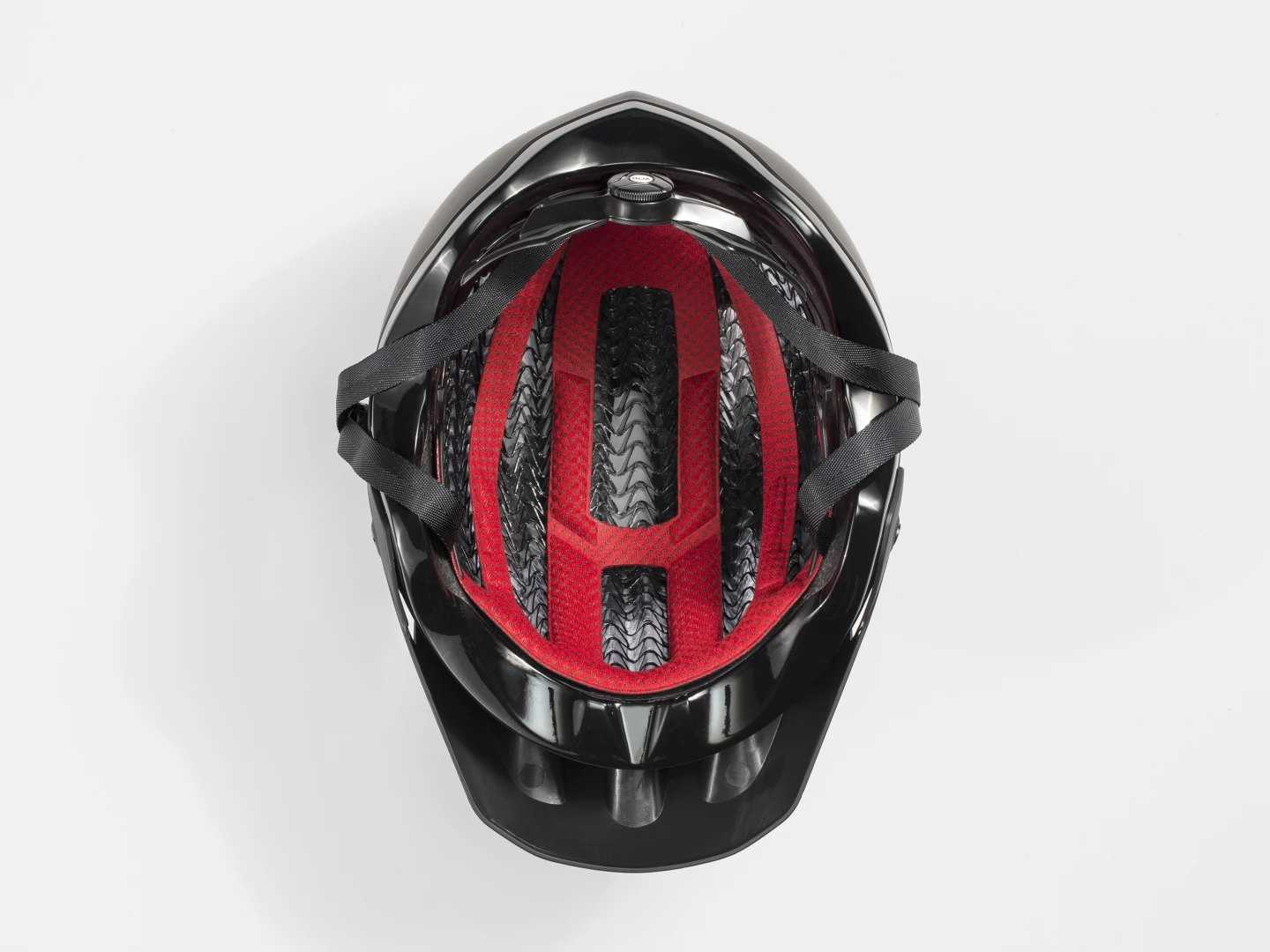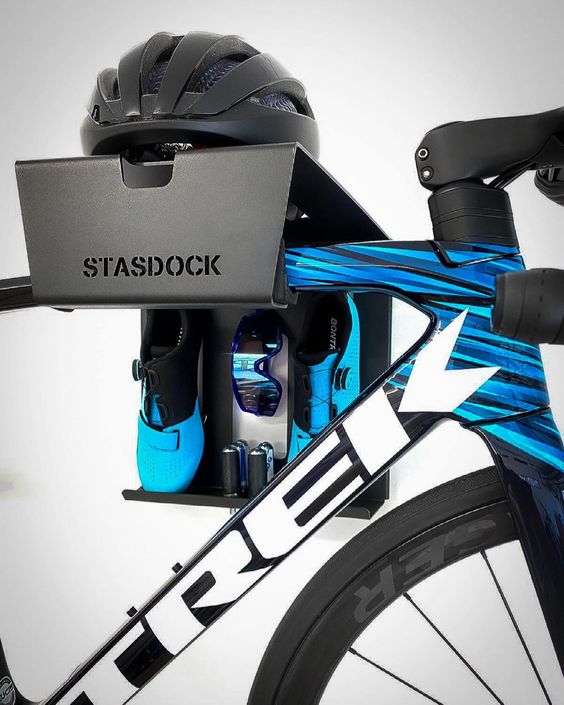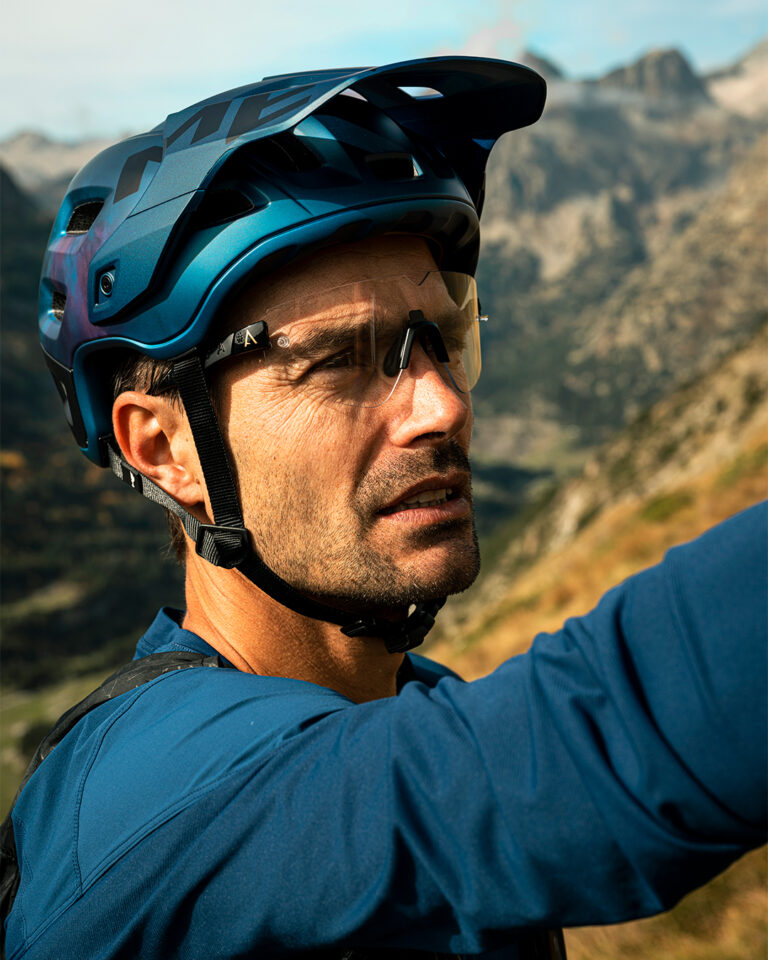Why You Want a Bicycle Helmet with MIPS
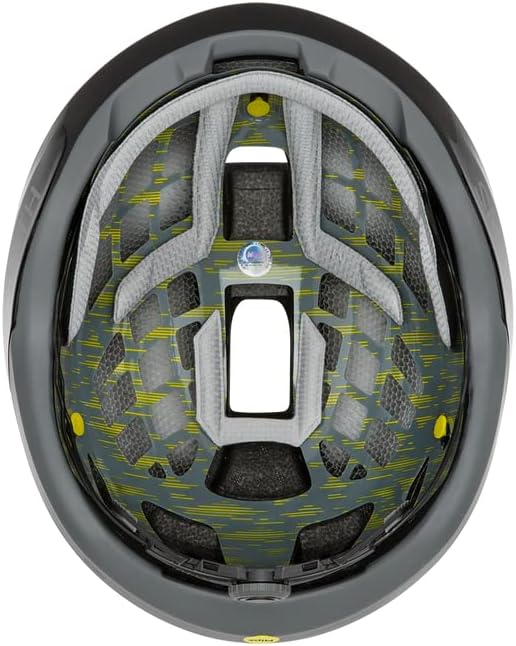
When it comes to protective gear for outdoor and sports activities, helmets are paramount. Whether you’re cycling through urban streets or racing down mountain bike trails, ensuring your head is well protected is crucial. But with the plethora of helmets on the market, you might ask yourself, “How do I choose the right one?” The answer: Prioritize technologies like MIPS. Here’s why you want a bicycle helmet with MIPS.
What is MIPS?
MIPS stands for Multi-directional Impact Protection System. It’s a technology developed in the early 2000s by Swedish neurosurgeon Hans von Holst and researcher Peter Halldin. The system is designed to reduce rotational forces on the brain caused by angled impacts to the head.
Traditional helmets are tested for vertical impacts. However, in many real-life situations, accidents result in angled impacts. These impacts can lead to harmful rotational motion that can strain brain tissue. MIPS-equipped helmets come with a low friction layer that allows a slight movement (10-15mm) between the helmet and the head during an impact. This movement can reduce the amount of rotational force transferred to the brain.
Key Benefits of MIPS
- Enhanced Safety: MIPS technology has undergone rigorous testing. Multiple studies have shown that it effectively reduces the rotational force transmitted to the brain during an angled impact. Considering the majority of real-world crashes involve these kinds of impacts, this makes MIPS-equipped helmets a smarter safety choice.
- Versatility: MIPS isn’t confined to one type of helmet or sport. From snow sports and cycling to motorcycling and horseback riding, the technology has been integrated into a vast range of helmets, making it widely accessible for various activities.
- Lightweight Design: MIPS layers are extremely lightweight, ensuring that they don’t add any significant weight to the helmet. This means you can benefit from added protection without sacrificing comfort.
- Comfort: The design of MIPS allows for ventilation and comfort, ensuring that it doesn’t disrupt the fit or feel of your helmet.
Myths and Misconceptions about MIPS

There are a few myths surrounding MIPS which we need to address:
- It makes the helmet hotter: MIPS does not compromise the ventilation of a helmet. The thin layer does not block vents or airflow.
- It’s a marketing gimmick: The science behind MIPS is robust. Years of research and real-world testing back its claims.
Why Should You Invest in a MIPS Helmet?
So why you want a bicycle helmet with MIPS? If you’ve ever spoken to someone who’s experienced a traumatic brain injury, or TBI, you’ll know that it’s not something anyone would wish on their worst enemy. TBIs can range from mild to severe and can have lifelong consequences.
Traditional helmets do a fantastic job of protecting against direct impacts, but most accidents in the real world aren’t straightforward. That’s where MIPS-equipped helmets come into play. By reducing the rotational motion transferred to the brain during a crash, these helmets can potentially decrease the risk of TBIs.
A Few MIPS Helmet Recommendations
While this article is not a product review, it’s worth noting a few leading helmets equipped with MIPS for those interested:
- For Cyclists: The Giro Synthe MIPS is a popular choice among road cyclists. It’s lightweight, ventilated, and features the MIPS system.
- For Mountain Bikers: The Bell Super 3R MIPS is versatile and designed for rugged terrains.
Alternatives to MIPS in Bike Helmets
Cyclists worldwide have become more informed and concerned about helmet safety, especially in terms of reducing the risk of concussions and traumatic brain injuries. One of the most talked-about technologies in recent years has been MIPS (Multi-directional Impact Protection System). While MIPS has garnered significant attention and popularity, it is by no means the only technology aiming to increase helmet safety. This post delves into some of the top alternatives to MIPS in bike helmets.
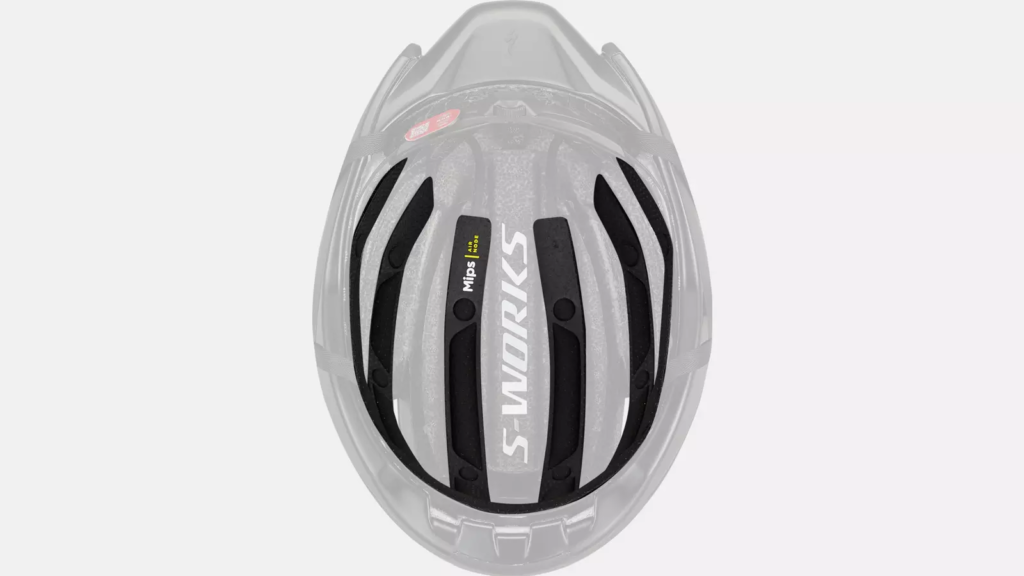
1. WaveCel
Brand: Bontrager (a subsidiary of Trek Bicycles)
What is it? WaveCel is a collapsible cellular structure that lines the inside of Bontrager helmets. It works in three stages upon impact: it flexes to reduce initial force, crumples into itself, and then glides to manage the energy of the impact.
Benefits:
- In a study, Bontrager claims that helmets equipped with WaveCel technology are up to 48 times more effective at preventing concussions compared to traditional foam helmets.
2. SPIN (Shearing Pads Inside)
Brand: POC
What is it? SPIN is POC’s approach to rotational impact protection. It involves placing silicone-filled pads inside the helmet. Upon angled impacts, these pads allow the helmet to rotate relative to the head, reducing the forces transmitted to the brain.
Benefits:
- SPIN doesn’t add any noticeable weight or bulk to the helmet.
- The pads also double as sweat-wicking components, adding to comfort.
3. 360° Turbine Technology
Brand: Leatt
What is it? This technology involves placing a series of small, rubberized turbines inside the helmet. These turbines aim to reduce both rotational acceleration and impact energy to the head during a crash.
Benefits:
- The turbines offer a dual advantage: they move inside the helmet for rotational impacts and also absorb energy upon direct impact.
- They are designed to be moisture-wicking and ventilating.
4. Koroyd
Brands: Smith, Endura, and others
What is it? Koroyd is a unique honeycomb structure used in some helmets to absorb energy. Made from thousands of co-polymer tubes that are thermally welded together, Koroyd structures crumple instantly and consistently upon impact, absorbing energy.
Benefits:
- Offers excellent ventilation because of the open structure.
- The design is lightweight, making it comfortable for long rides.
5. Omni-Directional Suspension (ODS)
Brand: 6D Helmets
What is it? ODS involves placing a series of dampers between two layers of EPS foam within the helmet. These dampers can compress and shear in any direction, helping to reduce rotational forces upon impact.
Benefits:
- The dual-layer EPS design combined with ODS can better handle impacts from different angles.
- This system also provides progressive damping during slower impacts.
Why Explore Alternatives?
While MIPS is undoubtedly groundbreaking and has set a new standard in helmet safety, these alternatives have arisen from the collective industry’s push for even greater levels of safety and innovation. Different brands have taken unique approaches based on their research, materials, and design philosophies.
In Conclusion
When it comes to our brains, it’s always better to be safe than sorry. As outdoor enthusiasts, we don’t want to compromise our safety, especially when the technology to better protect ourselves is readily available. MIPS is more than just a label or a brand; it represents years of scientific research aiming to keep our brains safer. The next time you’re on the hunt for a new helmet, remember that the slight price increase for MIPS technology is a small investment for potentially life-saving benefits. Safe adventures await!
John
Useful Links
The Best Cross Country Bike Helmets
The Best Downhill Bike Helmets
FAQ’s
Is it worth buying a MIPS helmet?
MIPS (Multi-directional Impact Protection System) is a technology developed to reduce rotational motion transferred to the brain from angled impacts to the head. This rotation can cause strain on the brain and result in brain injuries. MIPS is incorporated into some helmets, especially those used in cycling, skiing, snowboarding, and motorcycling, among other activities.
Here are some factors to consider when deciding whether to buy a MIPS helmet:
- Protection from Rotational Motion: The primary function of MIPS is to minimize rotational forces during an impact. The system uses a low-friction layer inside the helmet which allows the helmet to rotate slightly upon impact, redirecting the rotational forces.
- Research & Studies: Some studies have shown that MIPS helmets can reduce the rotational motion during an impact, which may reduce the risk of certain types of brain injuries. However, the extent of the protection and its real-world implications are still subjects of research and debate.
- Cost: MIPS helmets tend to be more expensive than non-MIPS counterparts. If cost is a concern, you’ll need to weigh this against the potential safety benefits.
- Fit & Comfort: While the MIPS layer can change the fit of a helmet slightly, many users don’t notice a significant difference. However, always try on a helmet before purchasing to ensure it fits comfortably.
- Broad Adoption: Many leading helmet manufacturers have adopted MIPS technology, and it’s available in a range of helmet models and price points.
- Other Technologies: MIPS is not the only technology aimed at reducing rotational forces. Other companies and systems, like POC’s SPIN, have their own approaches. Research and decide which (if any) seems most compelling to you.
- Standard Protection: It’s important to note that all helmets, regardless of whether they have MIPS, must meet certain safety standards. MIPS is an additional feature on top of these standards.
- Type of Activities: Consider the type of activities you’ll be participating in and the risk associated with them. For example, mountain biking or downhill skiing might have a higher risk of falls with rotational forces compared to casual city biking.
In conclusion, whether or not you should buy a MIPS helmet depends on your individual preferences, your willingness to invest in potentially greater protection, and the activities you’re involved in. Safety should always be a priority, and if you believe the additional protection provided by MIPS is worth the extra cost, then it may be a worthwhile investment for you. Always consult with experts, read reviews, and do your research before making a purchase.
What is special about a MIPS helmet?
A MIPS helmet stands out because of its design that specifically addresses rotational motion. When involved in an oblique impact, a MIPS-equipped helmet is designed to reduce the rotational forces that might be transferred to the user’s brain. The salient features of a MIPS helmet include:
- MIPS Layer: This is the defining feature of a MIPS helmet. The MIPS layer is a low-friction liner placed between the comfort padding and the foam shell of the helmet.
- Rotational Motion Reduction: In case of an angled impact, the MIPS layer allows the helmet to slide relative to the head. This movement is designed to reduce the rotational motion that would otherwise be transmitted to the brain, potentially leading to brain injuries.
- Elastomeric Attachment: The MIPS layer is typically attached using elastomeric anchors which allow it to move (rotate and slide) a few millimeters in any direction during an impact. This provides the necessary “slippage” to reduce rotational forces.
- Integration with Helmet Design: MIPS doesn’t significantly alter the outward appearance of a helmet. It’s a thin layer, and most of the design changes are internal. So, a MIPS-equipped helmet often looks like any other helmet from the outside.
- Versatility: The MIPS system has been incorporated into a wide variety of helmet types, from cycling to skiing, snowboarding, horseback riding, and even construction helmets. This shows the adaptability of the technology across different risk scenarios.
- Safety Standards: Helmets equipped with MIPS still meet or exceed the required safety standards for impact protection in their specific industries, with the added potential benefit of protection against rotational motion.
- Research-Backed: The concept behind MIPS is grounded in biomechanics and has been researched over the years to demonstrate its efficacy. While it doesn’t claim to eliminate the risk of injury, the idea is that it offers additional protection beyond what standard helmets provide.
In summary, the special aspect of a MIPS helmet is its design focus on mitigating rotational forces during an impact, which is thought to be a significant factor in certain types of brain injuries. This makes MIPS helmets a consideration for those who want an added layer of potential protection.
What are the disadvantages of MIPS helmets?
While MIPS helmets offer certain advantages in terms of potential protection from rotational forces, there are also some disadvantages or concerns to consider:
- Cost: MIPS-equipped helmets tend to be more expensive than their non-MIPS counterparts. If you’re on a tight budget, this might be a significant factor in your purchasing decision.
- Weight: The addition of the MIPS layer can add a small amount of weight to the helmet. For most recreational users, this weight difference may be negligible, but for professional athletes or those sensitive to helmet weight, it could be a consideration.
- Heat Retention: Some users report that MIPS helmets feel slightly warmer because the MIPS liner can reduce ventilation efficiency. Depending on the helmet design and your activity, this might be a concern, especially in hot weather or during intense physical exertion.
- Fit and Comfort: While many people find MIPS helmets comfortable, some users report that the liner can change the fit or feel of the helmet slightly. It’s essential to try on the helmet before purchasing to ensure comfort.
- Not a Guarantee: While MIPS technology is designed to reduce rotational forces on the brain, it doesn’t guarantee prevention of concussions or other injuries. It’s an added layer of protection, but it’s essential to maintain realistic expectations.
- Limited Real-World Data: While laboratory tests have demonstrated the potential benefits of MIPS, real-world data on its efficacy is still accumulating. Some critics argue that the advantages seen in lab settings may not translate as effectively to diverse real-world crash scenarios.
- Maintenance: The MIPS liner introduces another component to the helmet that can wear out, get dirty, or require maintenance. While it’s generally low-maintenance, it’s another factor to consider.
- Potential for False Sense of Security: As with any safety gear, there’s a concern that users might feel overly protected and take more risks. It’s crucial to understand that while MIPS offers additional protection, it doesn’t make one invincible.
In conclusion, while MIPS technology presents a promising approach to helmet safety by addressing rotational forces, it’s essential to weigh its advantages against the potential disadvantages. Depending on individual needs, preferences, and the specific use case, the benefits might outweigh the downsides for many users.
Does MIPS make a big difference?
The question of whether MIPS (Multi-directional Impact Protection System) makes a “big” difference is somewhat subjective and depends on the specific context in which you’re evaluating it. The purpose of MIPS is to provide added protection against rotational forces during oblique impacts, which are believed to be a significant contributor to certain types of brain injuries, such as concussions.
Here’s what we know about the potential difference MIPS can make:
- Laboratory Tests: In controlled laboratory settings, MIPS helmets have been shown to reduce rotational motion when subjected to oblique impacts compared to non-MIPS helmets. The reduced rotational motion is believed to decrease the risk of brain injuries.
- Real-World Scenarios: Real-world crashes and accidents are complex and can involve various forces and angles of impact. While MIPS is designed to help in oblique impacts that induce rotational motion, it might not provide significant added benefit in direct, linear impacts. The real-world efficacy of MIPS, while promising, is less concrete than lab results because of the diverse nature of accidents.
- Growing Adoption: Many helmet manufacturers have incorporated MIPS technology into their products, suggesting industry confidence in its potential benefits.
- No Guarantee: It’s essential to understand that MIPS doesn’t guarantee protection against concussions or other injuries. It’s an added layer of potential protection against certain forces, but other factors, such as the severity and angle of impact, also play a significant role.
- Professional Endorsement: Some professional athletes and organizations endorse or recommend MIPS technology, suggesting a level of trust in its benefits.
- Public Perception: Some users feel more secure with MIPS technology and believe it offers an added layer of protection, even if the magnitude of the difference in real-world scenarios is still under investigation.
In conclusion, while MIPS does offer a potential benefit in reducing rotational motion during certain impacts, whether it makes a “big” difference is a matter of personal opinion and interpretation of the available data. What’s clear is that it can make a difference, especially in scenarios where rotational forces are at play. When choosing a helmet, it’s always essential to consider various factors, including fit, comfort, intended use, and personal risk tolerance.
What does MIPS stand for in bike helmets?
In the context of bike helmets, MIPS stands for “Multi-directional Impact Protection System.” It’s a technology designed to reduce rotational forces on the brain that can occur during oblique impacts to the head. The system features a low-friction layer inside the helmet which allows a slight rotation of the helmet relative to the head upon impact, aiming to decrease the risk of brain injuries resulting from these rotational forces.
Do MIPS helmets make a difference?
MIPS (Multi-directional Impact Protection System) helmets are designed to reduce rotational forces on the brain during oblique or angled impacts. The system introduces a low-friction layer that allows a slight rotation of the helmet relative to the head during such impacts. This rotation is intended to decrease the risk of brain injuries caused by these rotational forces. The question of whether MIPS helmets make a difference revolves around their efficacy in reducing these specific forces and, subsequently, the potential for injury.
- Laboratory Evidence: In laboratory settings, MIPS helmets have been shown to reduce rotational motion compared to non-MIPS helmets when subjected to oblique impacts. This reduced rotational motion theoretically lowers the risk of certain types of brain injuries, like diffuse axonal injuries or concussions.
- Real-World Data: While laboratory results are promising, real-world accidents are multifaceted, involving various angles and forces of impact. MIPS is designed to address rotational forces during oblique impacts specifically. However, the exact effectiveness of MIPS in diverse real-world scenarios is more challenging to ascertain definitively.
- Adoption by Helmet Manufacturers: Many leading helmet brands have adopted MIPS technology, suggesting industry confidence in its potential benefits. The availability of MIPS helmets across various price points also makes them accessible to a broad range of consumers.
- No Absolute Guarantee: While MIPS offers potential additional protection against certain types of impacts, it doesn’t guarantee prevention against concussions or other head injuries. No helmet can promise complete protection against all potential injuries.
- Additional Cost: MIPS helmets often come at a premium compared to non-MIPS counterparts. Consumers must decide if the potential additional protection is worth the increased cost.
- Continued Research and Debate: While MIPS has its proponents, there’s ongoing research and debate about the exact degree of real-world benefit MIPS helmets provide. However, many safety experts and researchers agree that the concept behind MIPS — addressing rotational forces — is solid.
In conclusion, MIPS helmets do provide an added measure of protection against rotational forces in certain impact scenarios based on laboratory testing. Whether that difference is significant enough to warrant the additional cost or to influence a purchasing decision is a personal choice. It’s always essential to choose a helmet that fits well, meets safety standards, and is appropriate for the intended activity.
How should a road bike helmet fit?
A properly fitting road bike helmet is essential for safety and comfort. Here’s how a road bike helmet should fit:
- Head Measurement: Before buying a helmet, measure the circumference of your head using a flexible measuring tape. Measure around the largest part of your head, which is usually about an inch (2.5 cm) above your eyebrows. Use this measurement to select the appropriate size helmet based on the manufacturer’s sizing chart.
- Position on the Head: The helmet should sit level on your head and low on your forehead— one to two finger-widths above your eyebrow.
- No Tilting: The helmet should not tilt back on your head or rock more than an inch to the front or side. If it does, you need to adjust the fit or select a different helmet.
- Snug Fit: It should feel snug but not tight. If you shake your head side-to-side or up-and-down, the helmet should stay in place without wobbling or sliding.
- Side Straps: Adjust the side straps so that they form a “V” shape under, and slightly in front of, your ears.
- Buckle the Chin Strap: Once buckled, the strap should be snug under your chin. You should be able to fit one or two fingers between the strap and your chin. The strap should be positioned close to the throat rather than sitting on the point of the chin.
- Check the Fit: Open your mouth wide, as if you were yawning. The helmet should press down on the top of your head as you do this. If it doesn’t, tighten the chin strap.
- Turn the Dial or Adjust the Padding: Many modern helmets have a rear adjustment dial or adjustable interior pads. Use these features to secure the helmet snugly on your head. The goal is to achieve even pressure around your head without any tight spots.
- Hair Considerations: If you have long hair, consider how you’ll wear your hair when riding. Some cyclists with long hair prefer a helmet with a ponytail port.
- Replace After an Impact: Even if the helmet looks undamaged, if you’ve been in a crash while wearing it, it’s a good idea to replace it. The integrity of the helmet might be compromised, even if you can’t see any external damage.
- Regular Checks: Over time, daily wear and tear, UV degradation, or minor bumps can affect a helmet’s integrity. It’s recommended to replace helmets every 3-5 years, depending on usage, to ensure maximum protection.
Remember that even the best helmet won’t provide protection unless it fits correctly. If unsure, it’s a good idea to visit a local bike shop or cycling event where experienced staff or professionals can help you find a helmet that fits well.
When should I replace a road bike helmet?
A road bike helmet is an essential piece of safety equipment, and its effectiveness can diminish over time due to various factors. Here are the guidelines on when you should consider replacing a road bike helmet:
- After a Crash: This is the most definitive rule. If you’ve had an accident while wearing your helmet, even if there’s no visible damage, it’s essential to replace it. The helmet might have absorbed impact forces that compromised its integrity. It’s designed to dissipate energy in a crash, which often involves crushing or deforming of the foam. Even if it looks okay, it might not offer the same level of protection in another crash.
- General Wear and Tear: Over time, daily wear and tear can cause minor damages to the helmet. If you see cracks, dents, or any signs of degradation in the helmet’s foam or shell, it’s time to get a new one.
- UV and Environmental Degradation: Prolonged exposure to the sun’s UV rays, as well as extreme temperatures, can degrade the materials of the helmet, especially the foam. If your helmet has been exposed to the elements frequently or stored in a location with significant temperature fluctuations (like a car trunk), consider its longevity.
- Expiration Date: Helmets don’t come with a strict “expiration date,” but a common recommendation is to replace them every 3-5 years, depending on usage. This timeframe accounts for the degradation of materials over time, even if there are no visible signs.
- Strap or Buckle Damage: If the straps or buckles are frayed, worn out, or damaged, and they cannot be replaced individually, it might be time to get a new helmet.
- Updated Technology or Standards: Over time, helmet technology and safety standards evolve. Even if your helmet is in good shape, you might want to upgrade to benefit from new safety features or standards.
- Fit: As helmets age, the interior padding can compress or degrade, altering the fit. If your helmet no longer fits snugly or comfortably, consider replacing it.
- Loss of Components: Helmets often have vents, internal padding, and other components that can wear out or get lost. If these are irreplaceable and affect the safety or comfort of the helmet, it’s a sign to get a new one.
In any case, regular inspection of your helmet is a good practice. Look for signs of wear, damage, or other issues. Remember that the primary purpose of a helmet is safety, so ensuring it’s in optimal condition is crucial. If in doubt, err on the side of caution and replace it.
